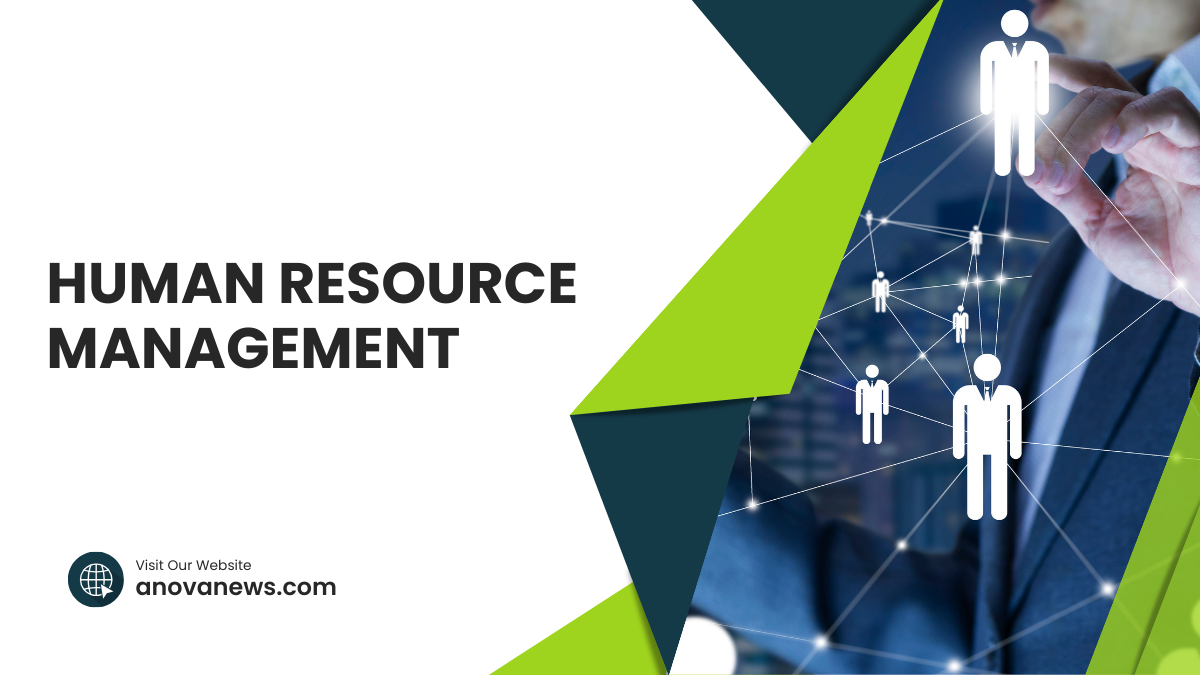Human Resource Management (HRM) is a vital function within organizations that focuses on managing the human capital—the employees who contribute to the achievement of organizational goals. It encompasses a wide range of activities aimed at maximizing employee performance and ensuring the organization meets its strategic objectives. This essay explores various aspects of Human Resource Management, its importance, challenges, and evolving trends.
Introduction to Human Resource Management
Human Resource Management (HRM) is a strategic approach to managing people within an organization effectively. It involves recruiting, selecting, training, and developing employees, as well as managing their performance, compensation, and benefits. HRM also addresses employee relations, ensuring compliance with labor laws and regulations and fostering a positive work environment conducive to employee satisfaction and productivity.
Key Functions of Human Resource Management
HRM encompasses several key functions that are essential to the success of an organization:
- Recruitment and Selection: HRM involves attracting and selecting the right talent for the organization. This process includes job analysis, writing job descriptions, sourcing candidates, conducting interviews, and making hiring decisions that align with the organization’s strategic goals and culture.
- Training and Development: Once employees are hired, HRM is responsible for their training and development. This involves identifying training needs, designing and delivering training programs, mentoring, coaching, and providing opportunities for career development and advancement.
- Performance Management: HRM oversees the performance appraisal process to evaluate employees’ performance, provide feedback, set goals, and reward high performers. Effective performance management systems help align individual goals with organizational objectives.
- Compensation and Benefits: HRM designs and administers compensation and benefits packages that are competitive and equitable. This includes salary structures, bonuses, incentives, health insurance, retirement plans, and other perks designed to attract, motivate, and retain employees.
- Employee Relations: HRM manages employee relations to promote a positive work environment and resolve conflicts or issues that may arise. This includes developing and implementing policies and procedures, handling grievances, promoting diversity and inclusion, and fostering employee engagement.
- Legal Compliance: HRM ensures compliance with labor laws, regulations, and ethical standards. This includes laws related to equal employment opportunity, workplace safety, labor relations, and privacy rights.
- Strategic HR Planning: HRM plays a strategic role in aligning human capital with organizational goals. This involves workforce planning, succession planning, talent management, and forecasting future HR needs based on business objectives and industry trends.
Importance of Human Resource Management
Effective HRM is critical to organizational success for several reasons:
- Optimizing Employee Performance: HRM practices such as training, development, and performance management help maximize employee productivity and engagement, leading to improved organizational performance.
- Talent Acquisition and Retention: HRM attracts top talent to the organization and retains high-performing employees through competitive compensation, career development opportunities, and a positive work environment.
- Strategic Alignment: HRM aligns human capital with strategic business goals, ensuring that organizational resources are deployed effectively to achieve desired outcomes.
- Enhancing Organizational Culture: HRM plays a key role in shaping organizational culture by promoting values, norms, and behaviors that contribute to a cohesive and productive work environment.
- Legal Compliance and Risk Management: HRM ensures compliance with laws and regulations, mitigating legal risks associated with employment practices and fostering a fair and ethical workplace.
- Innovation and Adaptability: HRM supports organizational innovation and adaptability by developing employees’ skills and capabilities to respond to changing market dynamics and technological advancements.
Challenges in Human Resource Management
Despite its importance, HRM faces several challenges in today’s dynamic business environment:
- Managing Diversity: Globalization and diversity in the workforce present challenges in managing multicultural teams, addressing cultural differences, and promoting inclusivity.
- Technological Advancements: HRM must leverage technology for recruitment, training, performance management, and data analytics while ensuring data security and privacy.
- Workforce Planning: Balancing workforce supply and demand, especially in industries facing skill shortages or rapid technological changes, requires proactive workforce planning and talent management strategies.
- Employee Engagement and Retention: Engaging employees and retaining top talent is increasingly challenging in competitive labor markets where skilled workers have multiple job opportunities.
- Legal and Regulatory Compliance: Keeping up with changing labor laws, regulations, and compliance requirements across different jurisdictions requires continuous monitoring and adaptation of HRM practices.
- Changing Nature of Work: HRM must adapt to remote work trends, flexible work arrangements, gig economy platforms, and evolving expectations regarding work-life balance and job security.
Emerging Trends in Human Resource Management
HRM is evolving in response to changing workplace dynamics and technological advancements:
- Digital HR: Automation, artificial intelligence (AI), and predictive analytics are transforming HRM processes such as recruitment, performance management, and employee engagement.
- Agile HR Practices: Agile methodologies are being adopted in HRM to promote flexibility, responsiveness, and collaboration across teams.
- Remote Work and Virtual Teams: HRM is adapting to manage remote workforces, virtual teams, and hybrid work environments, focusing on communication, collaboration tools, and employee well-being.
- Employee Experience: HRM is prioritizing the employee experience, focusing on creating meaningful work, fostering a positive workplace culture, and supporting employee well-being.
- Data-Driven Decision Making: HRM is leveraging data analytics to make informed decisions about recruitment, performance management, training needs, and workforce planning.
- Skills Development and Upskilling: HRM is investing in continuous learning and development programs to upskill employees and prepare them for future roles and technological advancements.
Conclusion
Human Resource Management is integral to organizational success by managing and developing the organization’s most valuable asset—its people. By focusing on recruitment, training, performance management, and employee relations, HRM enhances employee productivity, engagement, and satisfaction, thereby contributing to the achievement of strategic business objectives. Despite challenges such as managing diversity, technological advancements, and evolving workplace dynamics, HRM continues to evolve with emerging trends like digital HR, agile practices, and data-driven decision making. As organizations navigate these challenges and embrace these trends, effective HRM practices will play a pivotal role in shaping the future of work and maintaining competitive advantage in the global marketplace.
